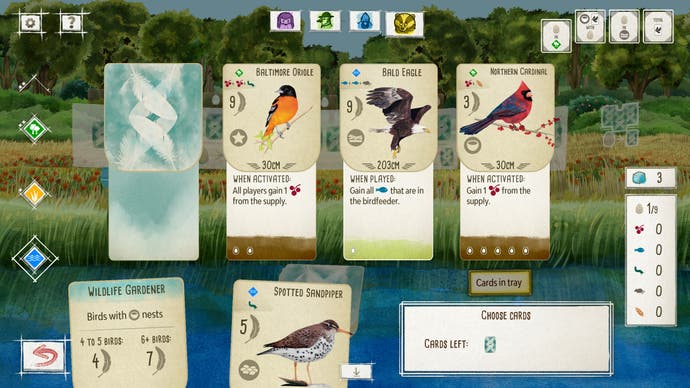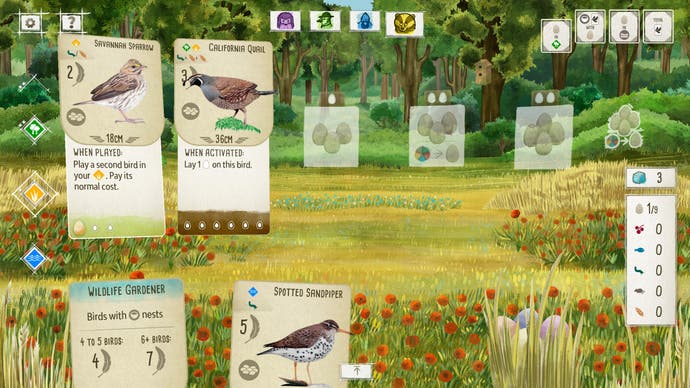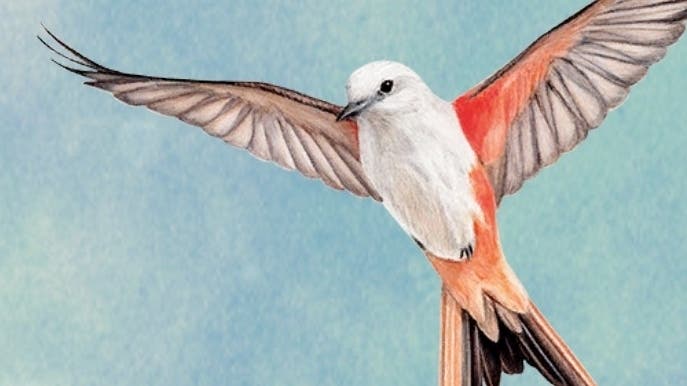The serene strategy of Wingspan, a game about attracting birds
Oriole treat.
We're taking Rezzed online over the next few days, presenting sessions and bringing you highlights of what's new and interesting in the world of independent games. You can find more details on exactly what's going on over here, and we'll be bringing you more write-ups over the coming days.
I've never played anything quite like Wingspan and I'm growing rather fond of it. But I am not alone. The board game world has been going cuckoo for Wingspan for the past year. It has flown off shelves and earned the prestigious Kennerspiel des Jahres prize, and I'm playing the official video game adaptation of it.
Wingspan is a game about attracting birds to habitats. Different birds are worth different amounts of points, and the player with the most points wins. That's it in a very crude nutshell but there are myriad other things affecting it.
The birds are cards, and to attract them to a habitat - ie. to play a bird card - you need to meet a food requirement. The bigger the bird, the bigger the food requirement. Do they need a fish and a rodent, or just a worm?

You make food in your forest habitat by rolling dice, special food dice with little pictures on, and you can roll more dice the more birds you have living there. But in order to put more birds in your forest, you need eggs, and eggs come from your grassland habitat. Again, more birds living in your grassland habitat means more eggs. Likewise, more birds living in your wetland habitat means more bird cards. It's a game about establishing a prosperous ecosystem for yourself. It's a game about building a great web of interconnected bits and pieces in which complex life can flourish.
But that's the easy part. Birds have abilities, and I'm still wrapping my head around these. Abilities allow birds to do things like get more food, more cards and more eggs, and they trigger off of other bird abilities, or when opponents do things. When you're up and running, you can have many extra effects firing off during a round, but it's complicated, which means there's plenty of depth.

One of the joys of a video game adaptation of a board game is it handles all the fiddly stuff like keeping track of what's going on so you don't have to, and Wingspan does this well. You can't make a wrong move because the game doesn't let you, and it coaches you one-to-one like a built in tutor. Unfortunately, at the moment, the tutoring doesn't go far enough. I had barely grasped the basics before I was left to cope on my own. I fumbled around in the dark for at least another hour before I finally grasped enough to feel like I was actually playing properly. But I'm told the tutorial and tooltips are two things developer Monster Couch is hard at work on before the full spring release, which is a relief.
The other things adaptations of board games do, and Wingspan does it ably here, is pull you deeper into the setting of a game. Here, the watercolour world of Wingspan expands to grander, animated habitats, with bird noises and movement, and gentle guitar accompaniment. Cards and characters are colourfully drawn, and it's a very pleasant and relaxing place to be. And that's what strikes me most about Wingspan. I never thought I'd care what a Spotted Sandpiper or Baltimore Oriole was - a kind of cookie? - but now I do. There's nothing quite like this, and with a little bit of polish, this could be fab. (Oh and psst, it includes hot seat multiplayer and online.)


